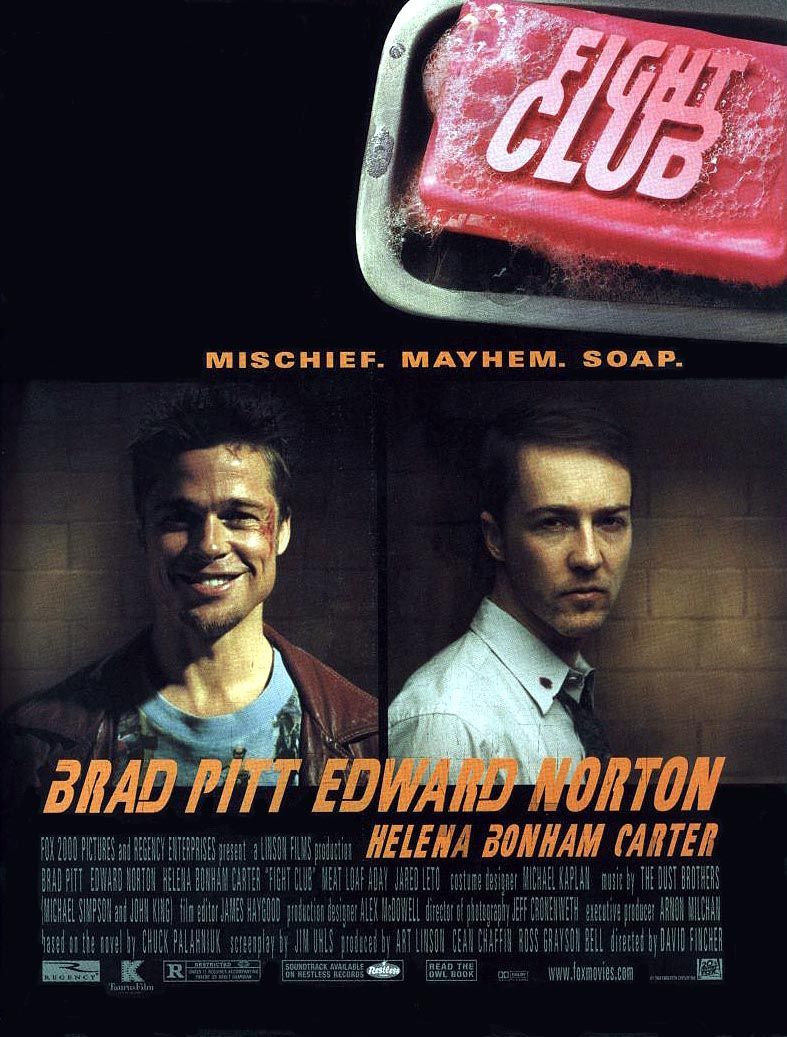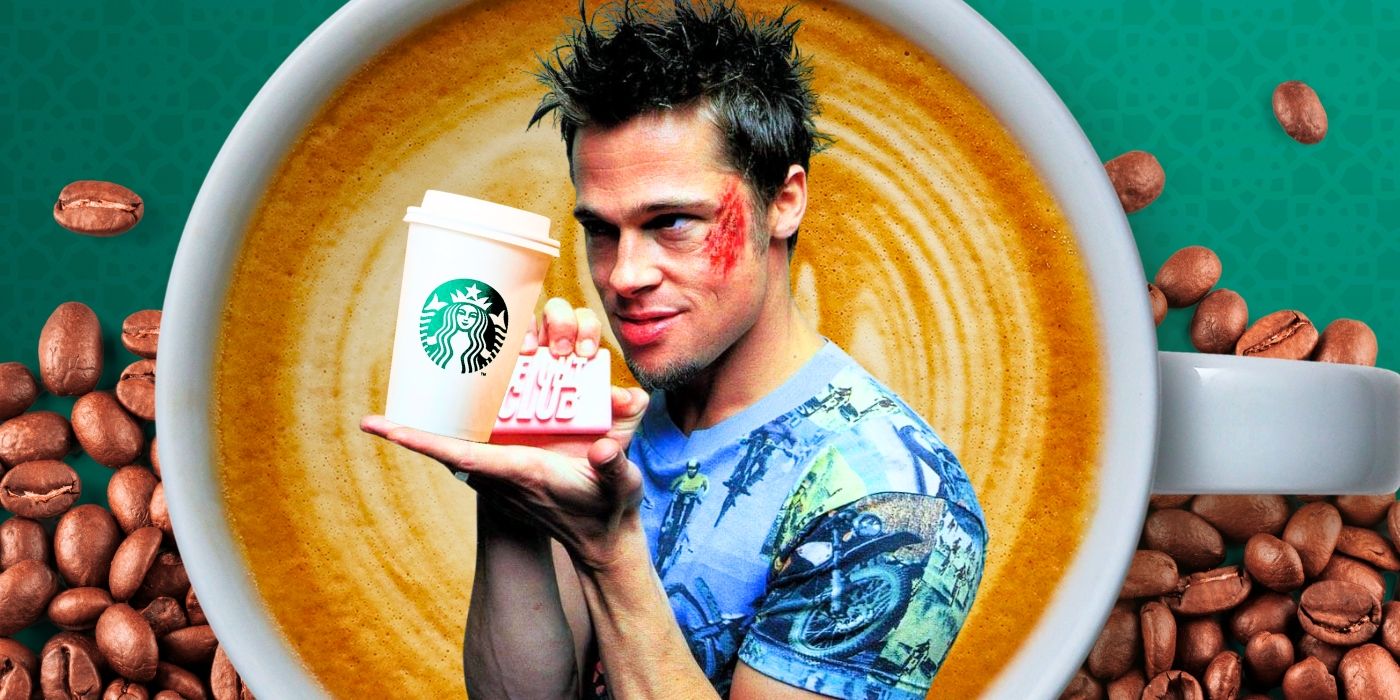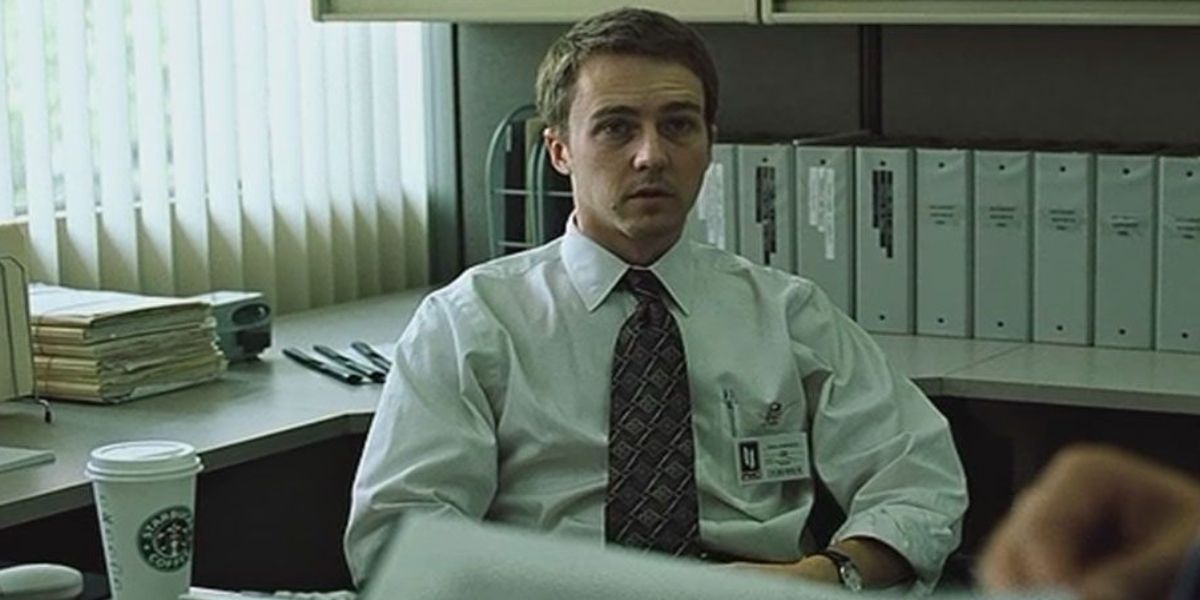The Big Picture
- Fight Club uses strategic products, including Starbucks cups, to critique consumerist culture and capitalism.
- While there is not a Starbucks cup in every shot of the movie, the scenes that do feature Starbucks cups are strategically chosen to highlight corporate greed and the destruction of consumerist items.
- Despite its critique of consumerism, Fight Club is also a prime example of the power of advertising and how brands can profit from product placement in films.
The epic David Fincher flick Fight Club tackles tons of themes, from masculinity to social anarchism, but its examinations of consumerist culture and capitalism are some of the movie’s most interesting. Tyler Durden’s (Brad Pitt) Fight Club quote “The things you own end up owning you” pretty well encapsulates the movie’s anti-establishment sentiment, as he and the Narrator (Edward Norton) start a club where men beat the life out of each other on their quest to find meaning in a society where we’re largely judged based on what we have rather than who we are.
While Fight Club is full of recognizable brands, one franchise has become closely associated with the movie and is even rumored to appear in every scene. This is, of course, coffee titan Starbucks, whose iconic cups can be frequently seen throughout the film, and is one of the few brands that is referenced by name. So, in a movie that is ironically both a scathing critique of consumerism and an exceptional feat of advertising, why is Starbucks featured in Fight Club, and what does it mean?

Fight Club
An insomniac office worker and a devil-may-care soap maker form an underground fight club that evolves into much more.
- Release Date
- October 15, 1999
- Director
- David Fincher
- Cast
- Edward Norton , Brad Pitt , Helena Bonham Carter , Meat Loaf , Zach Grenier , Richmond Arquette
- Runtime
- 139 minutes
- Main Genre
- Drama
- Writers
- Chuck Palahniuk , Jim Uhls
- Tagline
- Mischief. Mayhem. Soap
David Fincher's ‘Fight Club’ Makes You Think
First off, Fight Club is all about subliminal messaging. We learn this when Tyler is working as a projectionist at a movie theater, and he splices single frames of pornography into family films. While the audience isn’t even aware of what has happened, the interruption has an impact on them, with some people becoming visibly unsettled and others suddenly becoming more interested in their romantic partners. Of course, we learn at the end of Fight Club that Tyler Durden is actually a figment of the Narrator’s imagination and that the Narrator himself has been the one running Fight Club, having a relationship with Marla Singer (Helena Bonham Carter), and captaining the chaotic anarchist organization, Project Mayhem.
It’s never explicitly said if the Narrator has actually been working as a projectionist when he was Tyler, but either way, the exploration of subliminal messaging stands. Most of the product placement throughout Fight Club works the same way. The characters don’t go to a bar and say “Can I get a Budweiser,” they just drink from the bottles with the logo conveniently facing the camera. Someone watching Fight Club later goes to the liquor store and sees that same logo, and suddenly they’re purchasing and drinking the same beer as Brad Pitt's enigmatic Tyler Durden.
No, ‘Fight Club’ Doesn't Have a Starbucks Cup in Every Shot
Starbucks, on the other hand, is referenced by name, and not in a very flattering way. At the start of Fight Club, the Narrator discusses his obsession with filling his world up with useless things because he’s unsatisfied with his life. He’s a harsh critic of consumerist culture but also a willing participant, moaning that one day we will name a planet “Starbucks” because of our obsession with brands, but also purchasing every IKEA product known to man. Everybody in his office drinks Starbucks coffee, and a cup sits on his desk with the unmissable two-tailed mermaid logo emblazoned on the front (after he "meets" Tyler, he isn't seen drinking Starbucks again.)
Now, director David Fincher has said that there is a Starbucks cup “in every shot” of Fight Club, and it’s become something of a cinematic urban legend. While Starbucks is certainly an important player in the movie, there’s not a Starbucks cup to be found in every scene of Fight Club, let alone every shot. However, the scenes that do feature the cups are incredibly strategic. For example, you can always find a Starbucks cup in the Narrator’s workplace, where he acts as a recall coordinator, weighing the financial pros and cons of taking potentially dangerous vehicles off the line. The place reeks of corporate greed, so it makes sense that this is where Fincher would choose to showcase a brand that charges seven bucks for a coffee. You can also find a Starbucks cup in the wreckage of the Narrator’s apartment after it explodes, symbolizing how all of his high-end, consumable junk blows up in one night when he loses his luggage full of brand-name items and his beloved apartment, also full of brand-name items.
There are other Starbucks cups to be found throughout Fight Club, often in the hands of background extras, but perhaps the most notable “screw you” to the brand is when Project Mayhem is tasked with destroying both “a piece of corporate art and a franchise coffee bar.” The Narrator’s sensitive friend Bob (Meat Loaf) and two other Project Mayhem members explode the base of a large, spherical sculpture, which rolls down a set of steps and destroys a fictional coffee bar called Gratifico. While not actually a Starbucks, Gratifico’s green circle logo and Italian name appear to be direct references to Starbucks’s own logo and use of Italian words for their cup sizes.
Starbucks Isn't Mad at ‘Fight Club’ Director David Fincher
While Fight Club’s portrayal (and pointed destruction) of the coffee chain is less than complimentary, there is no bad blood between Fincher and Starbucks. Fincher has discussed how while Starbucks started out as just a great coffee place, it became so popular that now there are two or three on every block. Like most things in a capitalist society, it’s become out of control and “too much of a good thing.” Furthermore, Starbucks knew how they were going to be used throughout Fight Club’s narrative, and while they didn’t allow for a runaway sculpture to destroy an actual Starbucks, they were down with all other references to their brand.
For anybody who’s disappointed that there’s not actually a Starbucks cup in every shot (or even scene) of Fight Club, we have to admit that it really wouldn’t make much sense. Aside from the obvious fact that a Starbucks cup crammed in with a close-up of an actor, for example, would stick out like a sore thumb, we spend half the movie in Tyler Durden’s dilapidated house. The whole point of Tyler is that he’s "sticking it to the man" one sneaky porno-still at a time, so it would be massively out of character (or imaginary character) to have him stop for an overpriced Chai latte on his way home, let alone leaving the evidence on display in his broken-down bachelor bad. Similarly, you won’t catch any of the men at Fight Club sipping on a Starbies, because it just wouldn’t work.
Where scenes are lacking in Starbucks, most of them have some sort of unofficial product placement in them. Some of the most obvious examples are Krispy Kreme and Budweiser (who doesn’t love cracking open a cold one after bashing your buddy’s teeth in?) but other brands like Pepsi, Gucci, Cadillac, BMW, and Apple are also blatantly shown. The most interesting thing, however, is that there are even brand logos shown when it’s not necessary. While it’s pretty easy to find a generic backpack with no visible logo, the Narrator rocks a Jansport. While nobody would notice a missing brand on an old office phone, in the scene where the Narrator beats himself to a pulp while his boss watches helplessly, there is a close-up of his phone with a clear AT&T logo. According to Concave Brand Tracking, all of this product placement made massive amounts of money for all the brands involved, and we can see how Fight Club, much like its Narrator, works as both a vicious criticism and an outstanding example of the power of advertising.
‘Fight Club' Uses Brands Like Starbucks and Budweiser Strategically
All of this reinforces the irony that the cycle of consumerism is inescapable in a capitalist society, because even the notorious anti-consumerism movie is rife with rampant consumerism. The clever product insertion also lets us know how our characters (and the filmmakers) feel about people's obsession with fancy brands, like when Tyler and the Narrator walk down a road with tire irons, trashing BMWs and sparing the clunkers. The fascinating thing, however, is that you will still find Tyler drinking name-brand beer and sporting high-end sunglasses. This not only further shows that it’s impossible to escape consumerism, but also shows how Fight Club’s characters struggle to find meaning because they’re not even totally sure what they’re fighting against. This is also displayed when the Project Mayhem crew celebrates with a case of Busch beer after vandalizing a building in a pointed (but ultimately pointless) act of rebellion, because they’re putting money into the hands of the very brands they complain are dominating their lives.
All this to say, Fight Club is one of the best satires of the 20th century, and this is most exemplified through the movie’s ingenious product placement. By referencing brands like Starbucks, David Fincher provides an unparalleled exploration of how our lives are dominated by our need to consume, and how this desire to have everything has the potential to ruin our lives. While the explicit advertising throughout Fight Club goes against the very message of the film, this is done intentionally to prove that, try as we might, we cannot escape the cycle of capitalism as long as we live on Planet Starbucks.
Fight Club is available to rent on YouTube in the U.S.


